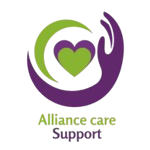
Connection between Mental Health and Disability
The Intersection of Mental Health and Disability: Holistic Support
Understanding the Interconnection
In a world where the buzzwords "mental health" and "disability" are often discussed separately, there's a profound need to explore their intersection. Both areas are deeply interwoven, influencing each other in complex ways that demand a comprehensive and holistic approach to support and care.
Mental Health and Disability: A Dual Perspective
When discussing disability, many people think primarily of physical limitations. However, disabilities can be cognitive, emotional, or sensory. Mental health conditions like depression, anxiety, or bipolar disorder can be considered disabilities, especially when they significantly impair one's ability to perform daily activities.
Conversely, living with a physical or sensory disability can impact mental health. The constant navigation through societal barriers, dealing with pain or mobility issues, and facing stigmatization can contribute to mental health struggles. This dual perspective underscores the importance of integrated support systems that address both aspects concurrently.
The Holistic Approach
1. Integrated Health Services
One of the primary steps towards holistic support is integrating mental health services with disability support. Healthcare providers need to adopt a multidisciplinary approach where psychologists, psychiatrists, and disability specialists work collaboratively. This ensures that treatment plans are comprehensive, addressing both the physical and psychological needs of the individual.
For example, someone with a spinal cord injury might need physical therapy to regain movement and also psychological counseling to cope with the emotional impact of their condition. Integrated health services mean that these needs are met simultaneously, rather than treating mental health and disability in isolation.
2. Accessible Mental Health Care
Mental health services must be accessible to individuals with disabilities. This includes physical accessibility, such as ensuring therapy centers are wheelchair-friendly, and cognitive accessibility, like providing information in easy-to-understand formats or offering support for those with sensory impairments.
Telehealth has been a game-changer in this arena, especially for those with mobility challenges. Virtual counseling sessions can eliminate the barriers of transportation and physical access, making mental health care more inclusive.
3. Advocacy and Education
Raising awareness about the intersection of mental health and disability is crucial. This involves educating healthcare providers, policymakers, and the public about the unique challenges faced by those who live with both conditions.
Advocacy can also push for policy changes that promote inclusive health care practices and provide adequate funding for integrated services. Campaigns that highlight personal stories can humanize these issues, fostering empathy and understanding within the broader community.
4. Community and Peer Support
Building supportive communities where individuals with disabilities and mental health conditions can connect is vital. Peer support groups offer a space where people can share their experiences and coping strategies, reducing feelings of isolation and providing a sense of belonging.
Community-based programs that focus on holistic well-being, including physical health, mental health, social connections, and vocational support, can significantly enhance the quality of life for individuals at this intersection.
Challenges and Opportunities
Stigma and Discrimination
Despite advances in understanding mental health and disability, stigma remains a significant barrier. Societal prejudices can lead to discrimination, making it harder for individuals to seek help or fully participate in community life. Overcoming this stigma requires concerted efforts at all levels, from individual interactions to systemic policy changes.
Resource Limitations
Access to integrated and holistic care can be limited by resources. Many regions face shortages of mental health professionals, and funding for disability services often falls short. Addressing these limitations requires innovative solutions and a commitment from both the public and private sectors to invest in comprehensive care.
Technological Advancements
Technology presents a significant opportunity to bridge gaps in service provision. From telehealth to assistive technologies, advancements can make a world of difference for those navigating the dual challenges of mental health and disability. Leveraging technology effectively requires ongoing adaptation and a focus on user-centered design.
Moving Forward
Embracing a holistic approach to support the intersection of mental health and disability is not just beneficial—it's essential. By integrating health services, making care accessible, advocating for inclusive policies, and building strong community networks, we can create a more supportive and understanding world for everyone.
As we move forward, it's vital to listen to those with lived experiences at this intersection. Their voices and insights should guide the development of policies, services, and support systems. In doing so, we can ensure that our efforts are grounded in real needs and lead to meaningful change.
### Conclusion
The intersection of mental health and disability is a complex but essential area of focus. By adopting a holistic approach that integrates services, enhances accessibility, advocates for change, and builds community, we can provide robust support that meets the diverse needs of individuals living with both mental health conditions and disabilities.
As we continue to advance our understanding and improve our support systems, we pave the way for a more inclusive, empathetic, and equitable society for all.
---
Author's Note
This blog is part of a series exploring the multifaceted nature of health and well-being. Join the conversation by sharing your thoughts and experiences in the comments below. Together, we can learn and grow towards a more inclusive future.
---
Feel free to share your thoughts or ask questions about this blog post in the comments section!


 About Us
About Us